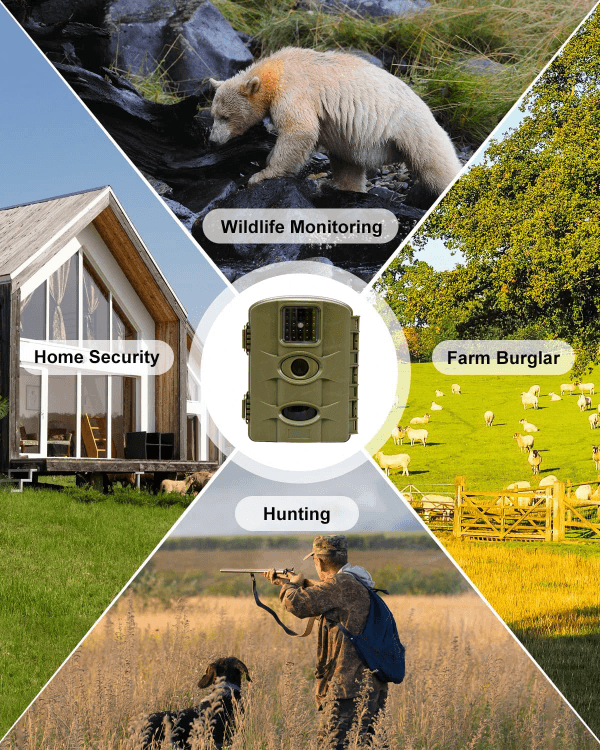Introduction
For many hunters, finding and harvesting a mature buck is the ultimate goal. Big bucks are elusive, clever, and require strategy, patience, and skill to locate. Whether you’re a novice or an experienced hunter, understanding deer behavior, habitat, and effective hunting techniques can significantly improve your chances. This guide provides practical tips and strategies to help you locate and successfully hunt big bucks.
1. Understand Deer Behavior
Seasonal Movements
Deer behavior changes with the seasons, primarily influenced by breeding, food availability, and weather.
- Early Season (Pre-Rut): Bucks focus on feeding and establishing territories. They often stick to predictable patterns.
- Rut Season: During the rut, bucks become more active, covering greater distances in search of does. This is an excellent time to spot them as they move during daylight.
- Late Season: Bucks become more cautious, focusing on survival and food sources after the rut.
Daily Patterns
Big bucks are crepuscular, meaning they are most active at dawn and dusk. However, during the rut, their activity can increase throughout the day.
2. Identify Prime Habitats
Food Sources
Big bucks need consistent access to food to maintain their size and health. Look for areas rich in acorns, cornfields, soybeans, or other crops. In the late season, focus on food plots or areas with leftover crops.
Water Sources
Deer require regular water intake, especially in warmer climates. Identify ponds, streams, or watering holes in your hunting area.
Cover and Bedding Areas
Big bucks prefer areas with thick cover for bedding and protection. These could include:
Dense woods.
Overgrown fields.
Brush piles.
3. Use Trail Cameras and Technology
Trail Cameras
Strategically placed trail cameras are invaluable for monitoring deer movement.
- Place cameras near trails, feeding areas, or bedding sites.
- Check them regularly to understand patterns and identify the presence of big bucks.
Hunting Apps and GPS
Modern hunting apps can help map deer trails, identify feeding areas, and track weather patterns. GPS tools can also ensure you don’t disturb bedding areas while scouting.
4. Scout Your Hunting Area
Pre-Season Scouting
Before the hunting season, spend time walking your hunting grounds to locate:
- Rubs and scrapes: Signs of bucks marking their territory.
- Trails: Well-worn paths indicate high deer activity.
- Bedding and feeding areas: Observe where deer are likely to spend their time.
In-Season Adjustments
Deer patterns can change due to weather, hunting pressure, or food availability. Be prepared to adjust your strategies as needed.
5. Play the Wind
Deer have an extraordinary sense of smell. Always hunt with the wind in your favor to prevent your scent from reaching them.
- Use scent-eliminating sprays on your clothing and gear.
- Position yourself so the wind carries your scent away from the areas you expect deer to approach.
6. Choose the Right Hunting Spot
Stand Placement
Tree stands or ground blinds should be placed strategically to maximize your chances:
- Set up near trails that connect bedding and feeding areas.
- Ensure the stand provides good visibility while blending into the surroundings.
Hunting the Rut
During the rut, focus on travel corridors between doe bedding areas. Bucks often use these paths while searching for mates.
7. Timing Your Hunts
Weather and Moon Phases
- Cold Fronts: Big bucks tend to move more during cooler weather. A sudden drop in temperature can increase activity.
- Moon Phases: While controversial, some hunters believe moon phases can influence deer activity, particularly during the rut.
Peak Activity Times
- Hunt early mornings and late afternoons when deer are naturally more active.
- During the rut, consider all-day sits as bucks are more likely to move at unusual times.
8. Stay Stealthy and Patient
Reduce Noise
Avoid loud movements or talking. Ensure your gear doesn’t make unnecessary noise when moving or shooting.
Stay Still
Deer have keen eyesight, particularly for detecting movement. Minimize your movements, especially when a buck is nearby.
Be Patient
Big bucks didn’t grow large by being careless. Sometimes, waiting hours or days for the right opportunity is necessary.
9. Use Decoys and Calls
Decoys
During the rut, a doe or buck decoy can attract a dominant buck. Place the decoy in an open area where it is easily visible.
Calling Techniques
- Grunts: Mimic the sound of a buck to challenge dominant males.
- Rattling: Simulate the sound of bucks fighting to draw in a curious or aggressive buck.
- Doe Bleats: Mimic the sound of a doe in estrus to attract bucks during the rut.
10. Stay Safe and Ethical
Follow Hunting Regulations
Ensure you have the necessary licenses and follow local hunting laws. Respect property boundaries and wildlife management guidelines.
Ethical Hunting Practices
- Aim for a clean and humane shot to minimize suffering.
- Recover and utilize as much of the harvested animal as possible.
Conclusion
Finding and harvesting big bucks is as much about strategy and preparation as it is about skill. By understanding deer behavior, scouting effectively, and employing the right tools and techniques, you can increase your chances of success. Remember, patience and perseverance are key, as big bucks are masters of survival. For hunters and outdoor enthusiasts looking to enhance their hunting experience, Shenzhen MHC has a professional R&D team that provides one-stop custom solutions for electronic products, helping you create tailored hunting tools to improve your success rate.



